Sphenisciformes
Spheniscidae
Penguins
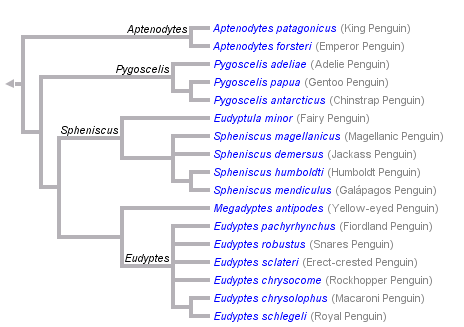


This tree diagram shows the relationships between several groups of organisms.
The root of the current tree connects the organisms featured in this tree to their containing group and the rest of the Tree of Life. The basal branching point in the tree represents the ancestor of the other groups in the tree. This ancestor diversified over time into several descendent subgroups, which are represented as internal nodes and terminal taxa to the right.

You can click on the root to travel down the Tree of Life all the way to the root of all Life, and you can click on the names of descendent subgroups to travel up the Tree of Life all the way to individual species.
For more information on ToL tree formatting, please see Interpreting the Tree or Classification. To learn more about phylogenetic trees, please visit our Phylogenetic Biology pages.
close boxReferences
Bertelli, S., and N. P. Giannini. 2005. A phylogeny of extant penguins (Aves: Sphenisciformes) combining morphology and mitochondrial sequences. Cladistics 21: 209-239.
Dann, P., I. Norman, and P. Reilly, eds. 1995. The Penguins: Ecology and Management. Surrey Beatty & Sons, Sydney.
Davis, L. S. and J. Darby, eds. 1990. Penguin Biology. Academic Press, San Diego.
Giannini, N. P., and S. Bertelli. 2004. Phylogeny of extant penguins based on integumentary and breeding characters. The Auk 121: 422-434.
Gill, F. and M. Wright. 2006. Birds of the World: Recommended English Names. Princeton NJ: Princeton University Press.
Grant, W. S., D. C. Duffy, and R. W. Leslie. 1994. Allozyme phylogeny of Spheniscus penguins. The Auk 111: 716-270.
Marchant, S. and P. J. Higgins, eds. 1990. Handbook of Australian, New Zealand and Antarctic Birds. Vol 1. Oxford University Press, Melbourne.
M?ller-Schwarze, D. 1984. The behavior of penguins: adapted to ice and tropics. State University of New York Press, Albany.
O?Hara, R. J. 1989. An estimate of the phylogeny of the living penguins (Aves: Spheniscidae). Am. Zool. 29, 11A.
Raikow, R. J., L. Bicanovsky, and A. H. Bledsoe. 1988. Forelimb joint mobility and the evolution of wing-propelled diving in birds. Auk 105:446-451.
Reilly, P. 1994. Penguins of the World. Oxford University Press.
Schreiweis, D. O. 1982. A comparative study of the appendicular musculature of penguins (Aves: Sphenisciformes). Smithsonian Contrib. Zool. 341:1-46.
Simpson, G. G. 1946. Fossil Penguins. Bull. Am. Mus. Nat. Hist. 87, 1?100.
Simpson, G. G. 1972. Conspectus of Patagonian fossil penguins. Am. Mus. Nov. 2488, 1?37.
Simpson, G. G. 1976. Penguins: Past and Present, Here and There. Yale University Press, New Haven.
Stonehouse, B. 1975. The biology of penguins. University Park Press, Baltimore.
Williams, T. D. 1995. The Penguins. Oxford University Press, New York.
Woehler, E. J. 1993. The Distribution and Abundance of Antarctic and Subantarctic Penguins. University Printing Services, Cambridge.
Zusi, R. L. 1975. An interpretation of skull structure in penguins. In: Stonehouse, B. (Ed.), The Biology of Penguins. University Park Press, Baltimore, MD, pp. 59?84.
Information on the Internet
- International Penguin Conservation Work Group
- Antarctica: Valued, Protected, Understood: Penguins. Australian Government Antarctic Division.
- International Penguin Order Sphenisciformes. Animal Diversity Web.
- Penguins InfoBook. SeaWorld/Busch Gardens.
- New Zealand Penguins
- Falklands.net
- Falklands Penguins
- Nature: The World of Penguins. PBS.
- KidZone: Penguins
- Penguins Around the World
- Pete & Barb's Penguin Pages
- PenguinWorld.com
Title Illustrations

| Scientific Name | Pygoscelis adeliae |
|---|---|
| Location | Antarctica |
| Acknowledgements |
The copyright owner has released this image under the Attribution-NonCommercial-NoDerivs 2.0 Creative Commons License. source: flickr: happy to see you |
| Specimen Condition | Live Specimen |
| Copyright | © 2005 robert bingham |
| Scientific Name | Aptenodytes patagonicus |
|---|---|
| Location | captive at Nagasaki Penguin Aquarium, Japan |
| Acknowledgements |
The copyright owner has released this image under the Attribution 2.0 Creative Commons license. source: flickr: Nagasaki Penguin Aquarium |
| Specimen Condition | Live Specimen |
| Behavior | diving |
| Copyright | © 2005 Kanko |
| Scientific Name | Eudyptes chrysocome |
|---|---|
| Location | captive at London Zoo |
| Acknowledgements |
The copyright owner has released this image under the Attribution-NonCommercial 2.0 Creative Commons License. source: flickr: Rockhopper Penguin, (Eudyptes chrysocome) |
| Specimen Condition | Live Specimen |
| Copyright | © 2006 Paul Redman |
About This Page
Correspondence regarding this page should be directed to Joseph W. Brown at
Page copyright © 2005 Joseph W. Brown
- First online 15 December 2005
- Content changed 21 March 2007
Citing this page:
Brown, Joseph W. 2007. Sphenisciformes. Spheniscidae. Penguins. Version 21 March 2007 (temporary). http://tolweb.org/Spheniscidae/26387/2007.03.21 in The Tree of Life Web Project, http://tolweb.org/




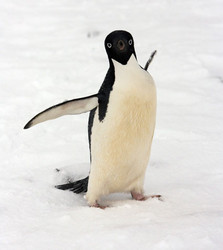
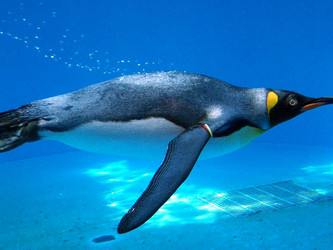
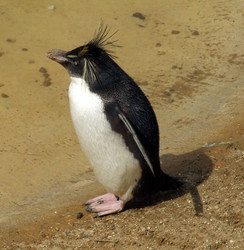

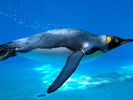


 Go to quick links
Go to quick search
Go to navigation for this section of the ToL site
Go to detailed links for the ToL site
Go to quick links
Go to quick search
Go to navigation for this section of the ToL site
Go to detailed links for the ToL site